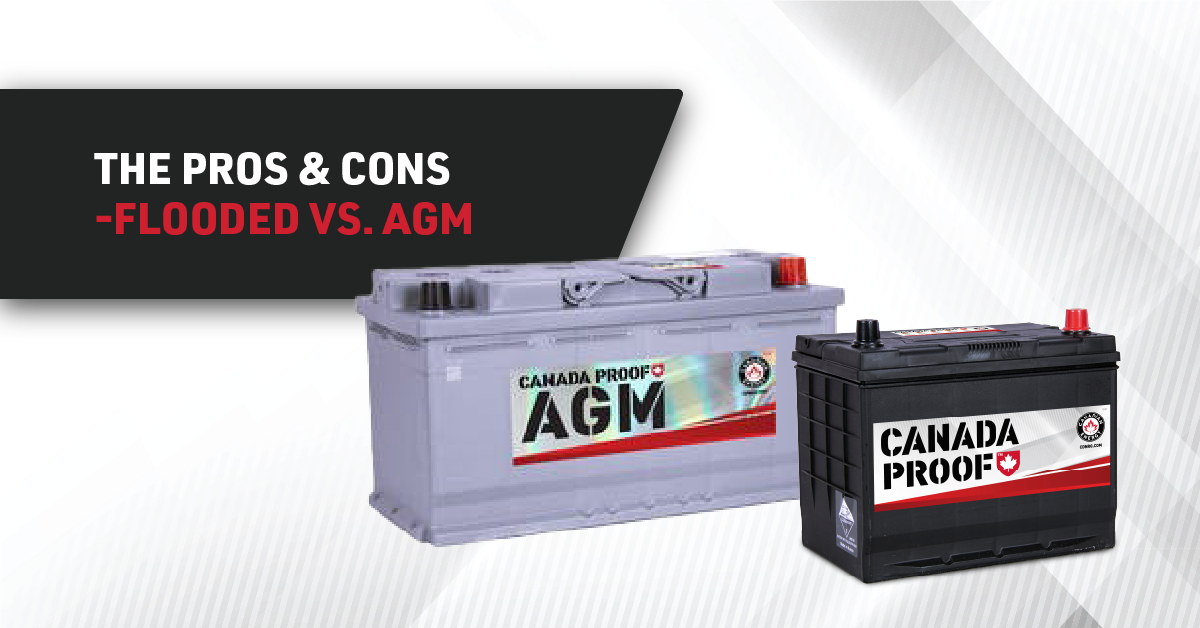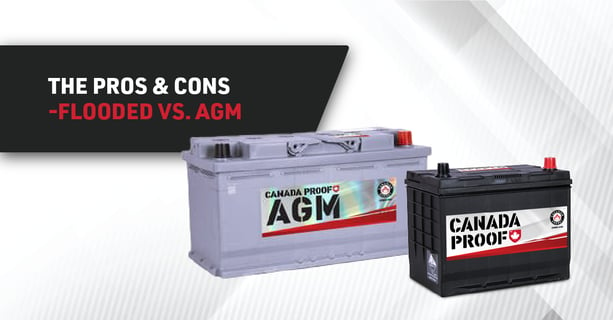Flooded vs. AGM Batteries


The pros and cons
While the construction of flooded and AGM batteries are different, the real difference to the consumer really boils down to two things: cost and maintenance.
Both battery types contain electrolyte mixture with about 35% sulfuric acid.
Flooded batteries have excess electrolyte within the cells that cover the plates by 1/2" to ¾ inch. They are known for off-gassing during charge and discharge operation.
While a battery is being charged or discharged, Hydrogen gas is given off and can be explosive. Care must be taken when working with flooded batteries without sparks or flames around the working area.
You’ll need proper safety gear such as safety glasses and rubber gloves.
Flooded batteries tend to be less expensive and widely available. They are a tried-and-true technology used most commonly for vehicle engine starting and deep-cycle applications.
AGM batteries have all the electrolyte absorbed in glass mat separators in between the plates. This means no free-flowing acid moving around in the batteries. They are non-gassing under normal charge and discharge applications, because they contain no free flow electrolyte, AGM batteries are not considered dangerous goods and can be handled with out the same considerations as flooded batteries.
Typically, AGM batteries tend to be more expensive than flooded, but costs are slowly coming down as many OEM’s have adopted this technology. Being mostly maintenance-free and not needing electrolyte to fill up, many vehicle owners tend to find value of the extra cost.
Check out Canadian Energy’s batteries and accessories for all needs: https://www.cdnrg.com/batteries
Or come into your nearest Canada Proof dealer or Canadian Energy branch to ask what works best for your vehicle or application:
https://www.cdnrg.com/help/contact-us
